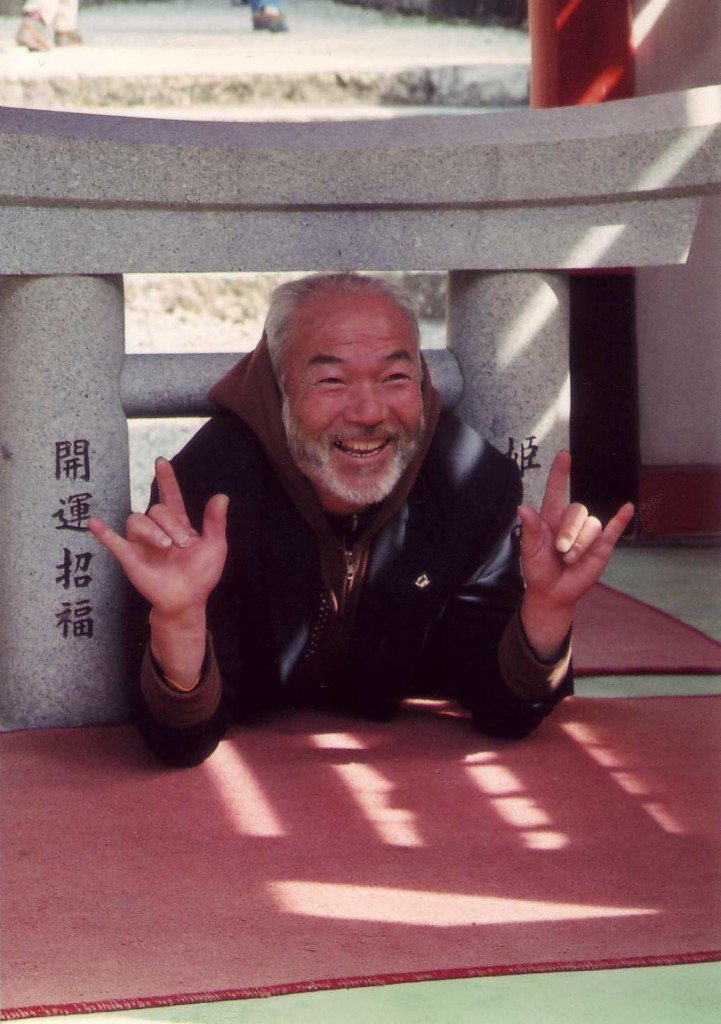
Happiness is a tight squeeze!
Squeezing through tight holes for good luck is very much a Japanese tradition that seems to cross the board in Buddhism, Shugendo and Shinto. No doubt it’s related to the act of being (re-)born. One of the fun things at Todai-ji in Nara is to watch schoolchildren and young women giggling with delight as they squeeze through the hole at the bottom of one of the giant pillars. And here in Kyoto we have the Yasui Konpira-gu shrine where people pass through a hole in a rock in one direction to cut off a bad relationship (enkiri) and then in the reverse direction in the hope of making a new relationship (enmusubi).
I’ve also noticed one or two mini-torii on my travels, and now Gabi Greve of the Joys of Japan blog has alerted me to an article on the subject. The extract below comes from a blog by ampontan, and the original can be found here.
***********************************************************************************************************
HOW’S THIS for a bright idea? Religious institutions where they encourage people to have some playground fun!
That seems to be the motivation for the Shinto shrines in Japan which have what are called mini-torii. The torii is the distinctive shrine gateway, and it serves as both the marker of the sacred space and as a symbol for the shrine itself. It’s usually erected near the start of the path leading to the main hall.
 But just because something’s sacred doesn’t mean it can’t be used for amusement. One example is shown in the first photo, which is a scene from the Flower Festival at the Awashima shrine in Unzen, Nagasaki. (You might remember that Unzen was the location of some severe volcano eruptions in the early 1990s.)
But just because something’s sacred doesn’t mean it can’t be used for amusement. One example is shown in the first photo, which is a scene from the Flower Festival at the Awashima shrine in Unzen, Nagasaki. (You might remember that Unzen was the location of some severe volcano eruptions in the early 1990s.)
In addition to the regular torii at the front of the premises, the Awashima shrine has three mini-torii. It’s a festival custom for women to try to crawl through these gateways. Successfully squeezing through all three is said to bring several benefits, such as safe childbirth, the rearing of healthful children, and a happy marriage. (Perhaps I should rearrange the order of those benefits!)
The torii are made of stone and have inner dimensions of 33 centimeters, 30 centimeters, and 27 centimeters. The women pass through the largest one first and then go on to the smaller ones in succession, which is supposed to represent the process of childbirth.
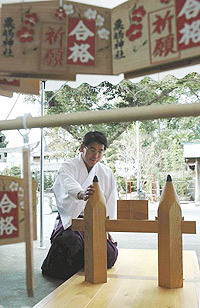
Five-sided pencil torii - pass through and you may squeeze through your exams too!
Meanwhile, the Awashima shrine in Uto, Kumamoto (this Awashima is written with different kanji), bills itself as having the number one mini-torii in Japan, as you can see from its Japanese-language website. They also have three mini-torii that people crawl through, though all three have 30-centimeter-square openings.
Since mini-torii are the shrine’s specialty, the parents in the district asked the authorities to create some special ones so their kids could crawl through in the hope of helping them pass school entrance examinations. That’s how the shrine’s chief priest came up with the idea for the one he’s showing off in the photo. The shrine has assembled it during the exam period during the past two years, and this year it was left up until March 31.
The pencils are 60 centimeters high and have a diameter of 10 centimeters. The inner opening is also 30 centimeters square. Pencils usually have six sides, but the priest must have been divinely inspired to make these with five. The word for passing a test in Japanese is gokaku, with a slightly elongated o sound. Make the o sound shorter, and the word can mean “five angles”.
It might not be so easy for some women—or bigger students—to pass through those torii, but it’s got to be easier than a camel passing through the eye of a needle on the way to heaven!
************************************************************************************************
For more on the subject, see Gabi Greve’s piece at this Japanshrinestemples blogspot here.
*************************************************************************************************
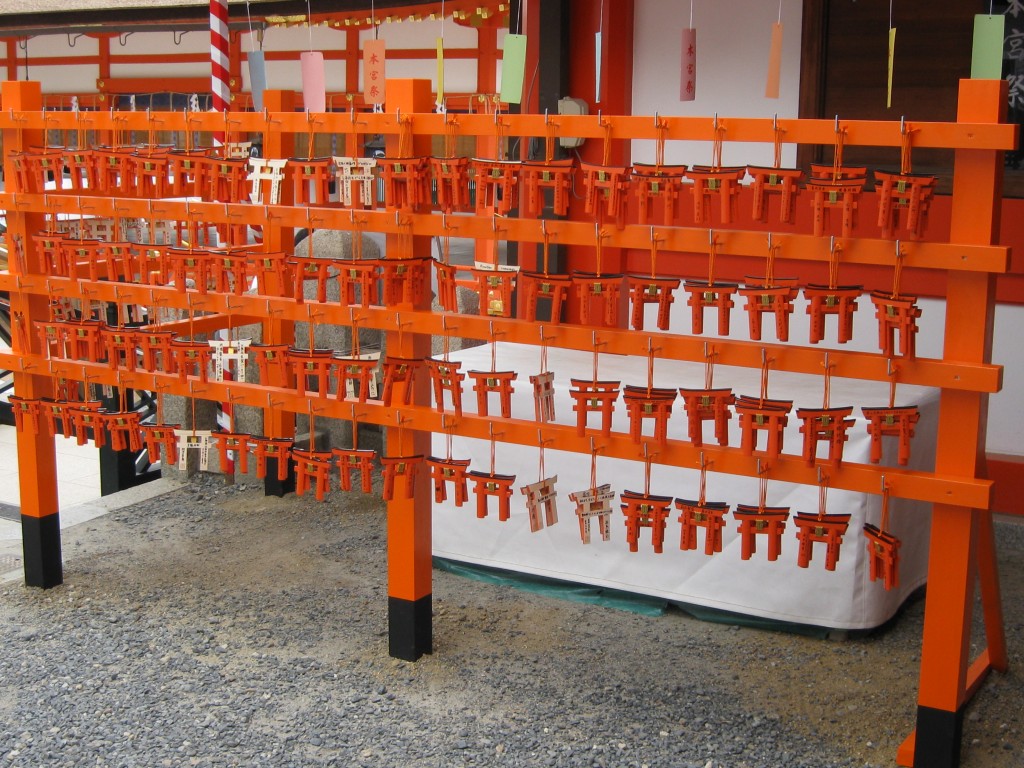
Some mini-torii are just too small even for a Japanese to climb through! (Fushimi Inari in Kyoto)
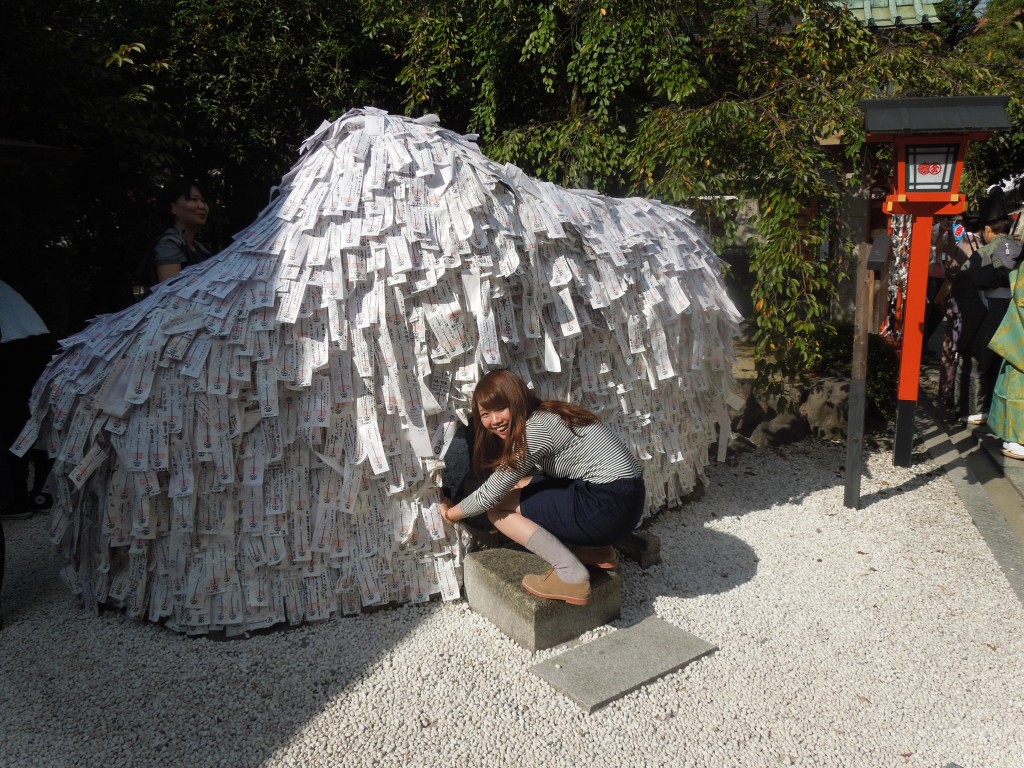
A young woman about to cut off a bad relationship by passing through the hole in the stone at Yasui Konpira-gu
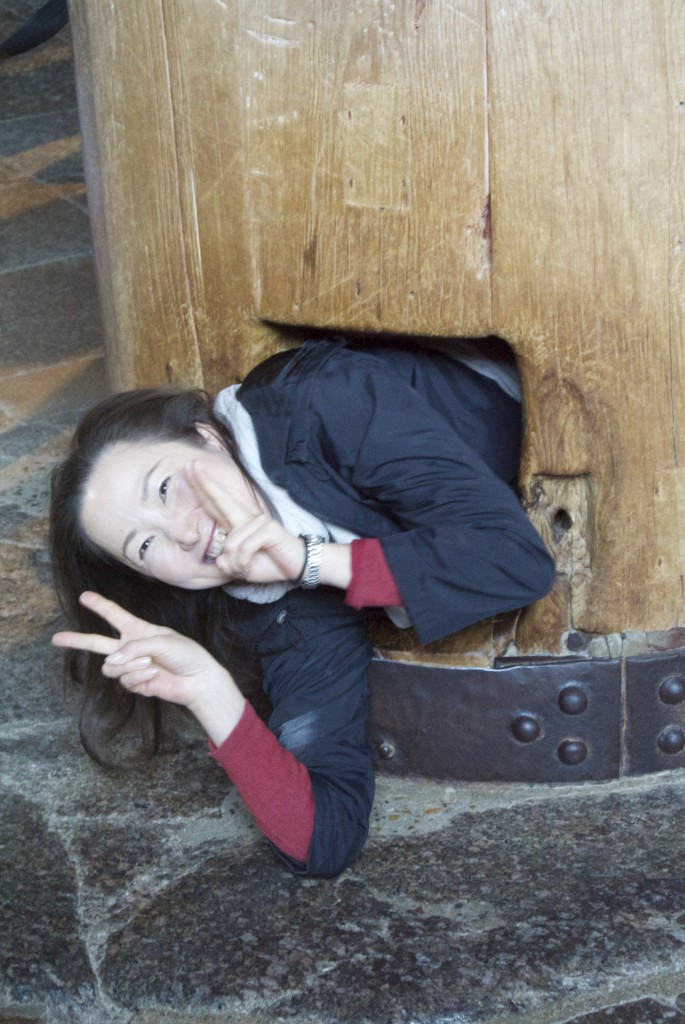
Passing through a bit more than the eye of a needle at the base of one of the massive pillars in Nara's Todai-ji

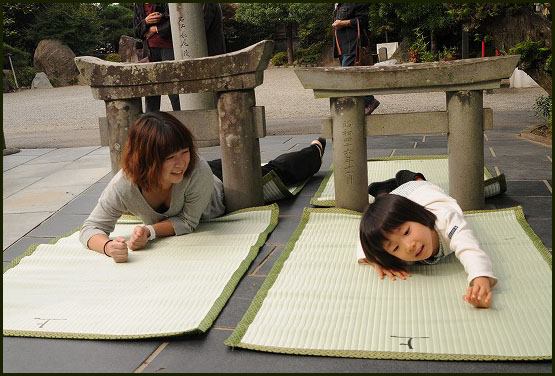
Leave a Reply